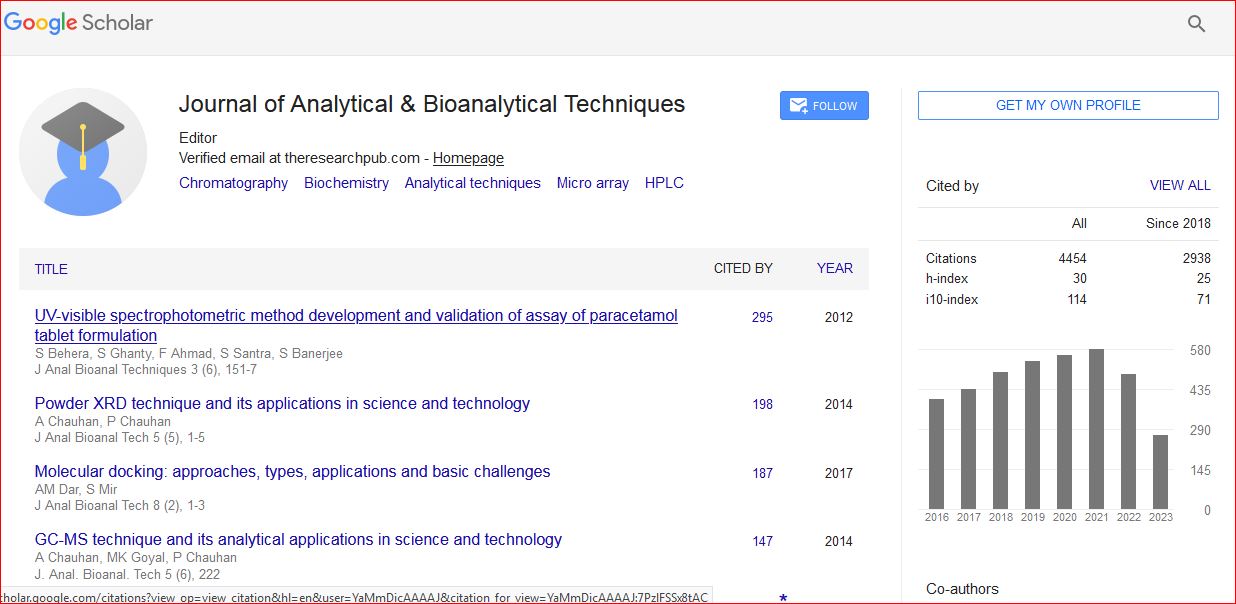Research Article
Medroxyprogesterone Acetate and Progesterone Measurement in Human Serum: Assessments of Contraceptive Efficacy
Molly S Augustine, Andrea E Bonny and Lynette K Rogers*Centers for Perinatal and Clinical and Translational Research, The Research Institute at Nationwide Children’s Hospital, Department of Pediatrics, The Ohio State University, USA
- *Corresponding Author:
- Lynette K Rogers, Ph.D.
Center for Perinatal Research
The Research Institute at Nationwide Children’s Hospital
575 Children’s Cross Road, Columbus, Ohio
Department of Pediatrics, The Ohio State University, USA
Tel: 614-355-6715
Fax: 614-355-6675
E-mail: Lynette.Rogers@NationwideChildrens.org
Received date: December 03, 2013; Accepted date: January 10, 2014; Published date: January 13, 2014
Citation: Augustine MS, Bonny AE, Rogers LK (2014) Medroxyprogesterone Acetate and Progesterone Measurement in Human Serum: Assessments of Contraceptive Efficacy. J Anal Bioanal Tech S5:005. doi: 10.4172/2155-9872.S5-005
Copyright: © 2014 Augustine MS, et al. This is an open-access article distributed under the terms of the Creative Commons Attribution License, which permits unrestricted use, distribution, and reproduction in any medium, provided the original author and source are credited.
Abstract
Medroxyprogesterone (MPA) is widely used as a contraceptive or for hormone replacement therapy after menopause. The use of MPA, specifically in adolescent girls, is linked to excess weight gain and decreases in bone mineral density. Metabolism and clearance of MPA is highly variable making this agent a candidate for individualized dosing strategies which could possibly decrease unwanted side effects. MPA has been measured in animal tissues and fluids for many years as a contaminant resulting from the use of growth hormones in food animals.
MPA has been measured by radioimmunoassay, gas chromatography-mass spectrometry (GC-MS) and liquid chromatography-mass spectrometry (LC-MS/MS). LC-MS/MS techniques have proven to be both more specific than radioimmunoassay and required much simpler sample preparation techniques than GC-MS. Here we describe an LC-MS/MS method specifically designed for monitoring MPA and progesterone levels in human serum. The technique in this report involves minimal sample preparation and yields results with precision and accuracy suitable for clinical use

 Spanish
Spanish  Chinese
Chinese  Russian
Russian  German
German  French
French  Japanese
Japanese  Portuguese
Portuguese  Hindi
Hindi 
